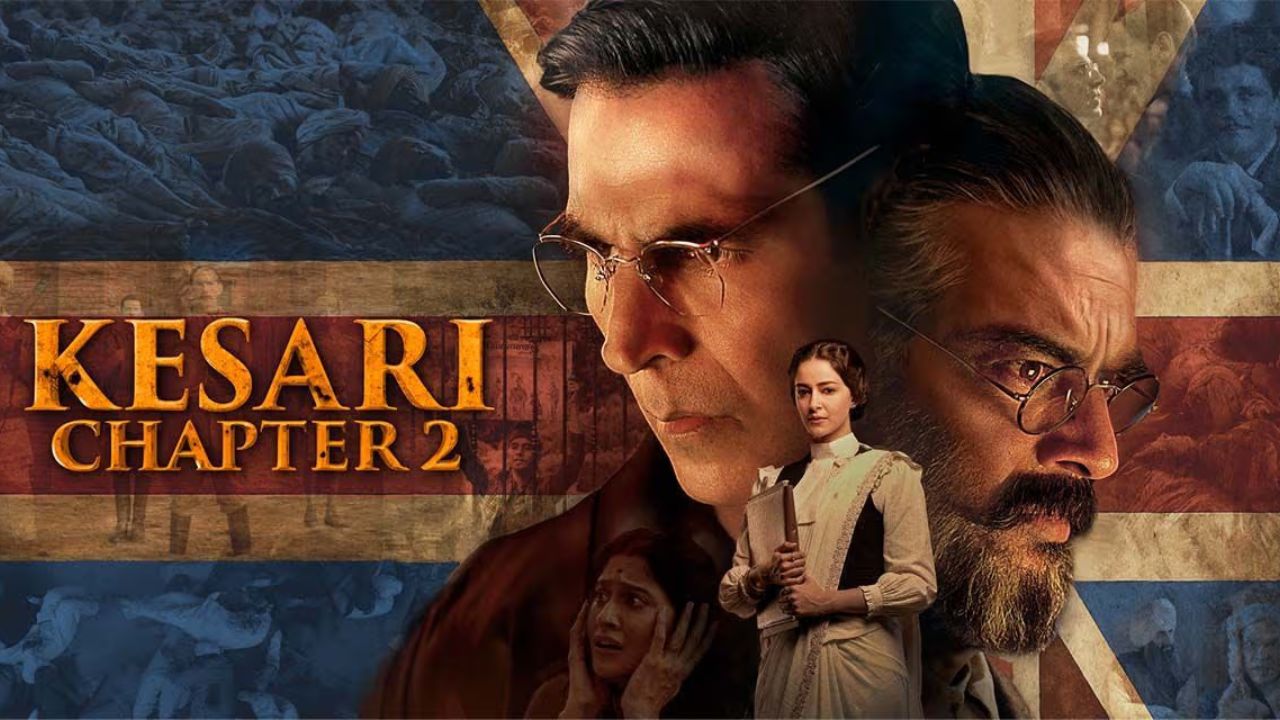Kesari: Chapter 2 attempts to pick up the patriotic baton with a courtroom-meets-political drama set against colonial India’s tumultuous backdrop. With a narrative centered around the iconic Malayali lawyer and statesman Sir Chettur Sankaran Nair, the film tries to blend historical gravitas with cinematic flair. While it boasts strong production value and a few moments of genuine intensity, it stumbles in casting and originality—making for a decent but unremarkable follow-up to the first installment.
Direction
The film leans into patriotic storytelling with courtroom theatrics and period detailing, but the directorial choices feel more functional than inspired. There’s a clear intention to elevate Nair’s legacy, but the execution sometimes lacks conviction.
✍️ Screenplay
The script borrows liberally from A Few Good Men, particularly in its attempt to draw a dramatic courtroom confession. While this adds tension, it also feels derivative. The writing finds occasional spark but often leans on predictable tropes rather than sharp legal drama or character depth.
Acting
Akshay Kumar as Sir Chettur Sankaran Nair feels miscast—his physicality and screen persona don’t quite align with the intellectual intensity the role demands. R. Madhavan brings much-needed heft in the second half, delivering with quiet force. Ananya Panday holds her own in a well-written but ultimately secondary role.
Music / BGM
Shashwat Sachdev’s background score stands out with arresting compositions that elevate several courtroom and confrontation scenes. The music adds much-needed emotional weight where the screenplay sometimes falls short.
Cinematography
Debojeet Ray’s cinematography captures the period with restraint and care. It doesn’t go overboard with visual flourishes, instead choosing a grounded aesthetic that suits the subject matter well.
Production & Costume Design
Rita Ghosh’s production design and Sheetal Iqbal Sharma’s costumes successfully recreate the era, lending credibility to the film’s visual world. The detailing—courtroom interiors, colonial-era buildings, and period-accurate attire—adds authenticity and depth to the setting.
Editing
Nitin Baid’s editing is tight and efficient, particularly in courtroom sequences where pacing is crucial. The film never overstays its welcome, and transitions between legal drama and historical context are handled smoothly.
Rewatchability
While technically competent and bolstered by a few strong performances, Kesari: Chapter 2 feels like a one-time watch. Its lack of novelty and casting missteps limit its staying power.
Cultural / Social Impact
The film revisits an important figure from India’s freedom struggle, shedding light on a lesser-known story. However, it stops short of becoming a definitive portrait or stirring conversation. It informs more than it inspires.
Watch or miss ?
Well-mounted and occasionally compelling, Kesari: Chapter 2 is a noble effort that misses greatness—but is still worth a single viewing for its subject and style.

